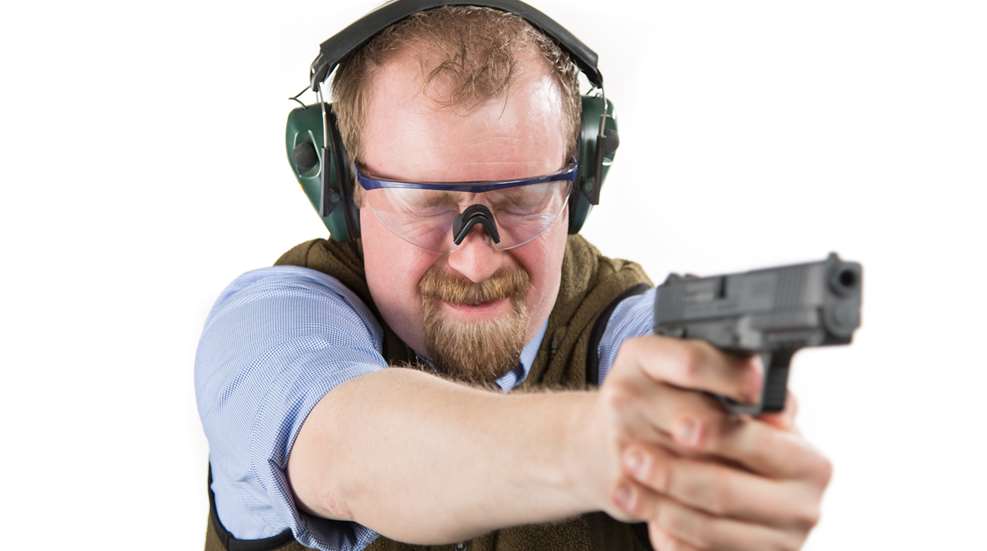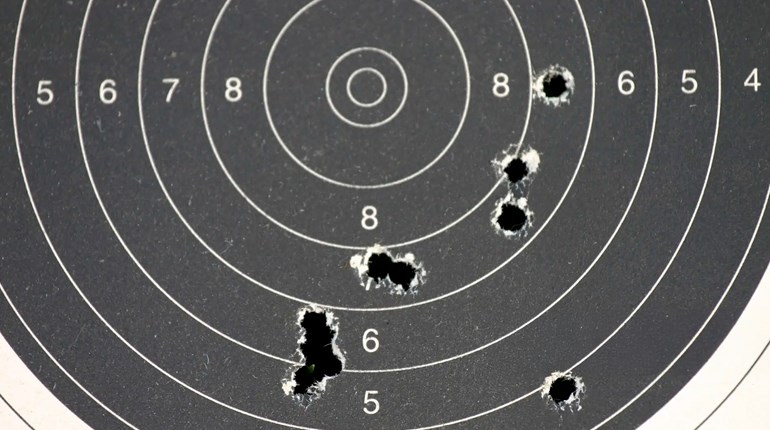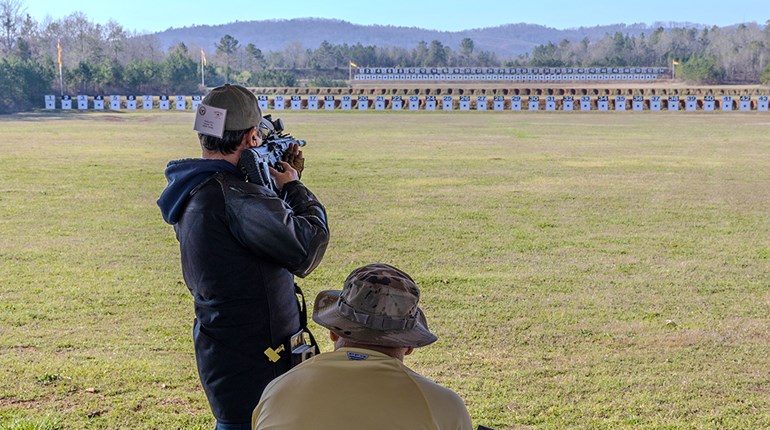
The Problem
You are new to shooting. You just bought a Glock 9 mm because that’s what the people at the gun store recommended. They offered a free training class which you attended. You took several more classes at the range associated with the gun store. A comment about your shooting that you weren’t supposed to hear in one of the classes was when one of the instructors told another that the safest place on the range was behind your target.
When you asked one of the range instructors why you weren’t hitting the target, you were told if you would stop jerking the trigger, you would hit the target. Another person on the range in a different class told you that you were flinching every time you fired a shot, and that you had better stop that if you ever expected to hit a target. You don’t know the difference between jerking the trigger and flinching, but need to find out in order to make the determination as to why you are scattering your shots all over the backstop with few hitting the target.
The Solution
There are similarities in the causes of flinching and jerking the trigger, but once diagnosed, they may be a product of two different problems.
Flinching refers to involuntary movement of the gun, and in some cases the trigger, prior to and sometimes during the shot-delivery process. It is a natural response to the loud noise created by firing the gun and the movement of the gun in the hands when it fires. The response comes from a part of the brain that could be termed the “crisis-control center.” This is the part of the brain that causes a person to react automatically to protect oneself when danger is sensed. A perfect example is when a person touches something hot that will burn the skin. There is no conscious thought required to move away from the hot object.
Although overlooked by many instructors who are teaching new students basic skills, the individual student must be inoculated from the fears of the loud noise and recoil of the gun when it is fired. It is a simple process that allows the student to listen to the gun as well as see and feel the gun’s movement when it is fired. This is done in a safe environment with total attention given to what the gun sounds like and what it feels like in the hands when it fires. With instructor supervision, this can be done safely with the student’s eyes closed while firing single shots into a suitable backstop. This exercise will maximize the effect of eliminating the fear of the gun’s sound and movement. Once the brain understands that the noise and push in the shooter’s hand of the discharging firearm is of no consequence to their personal safety, the involuntary movement of flinch goes away.
Trigger jerk can also be a product of the fear of what happens when the gun is discharged. It may be a case of wanting to get the unpleasantness over as quickly as possible. Jerking the trigger is usually accompanied by closing the eyes and gripping the gun in an inconsistent manner for each shot fired, none of which contribute to the desired level of marksmanship. Once the fear of firing the gun is eliminated, trigger jerk may go away.
There is another reason people jerk the trigger, however, and that can be attributed to visual input to the brain pertaining to sight picture.
Often without realizing it, the shooter sees the sights in proper alignment superimposed on the target for an acceptable sight picture initially, but as the trigger is being pulled, the eye focus transitions toward the target. This gives the perception of increased movement of the gun in relation to the target, which causes the need for the shooter to fire the shot before the perceived movement worsens, resulting in jerking the trigger.
Flinching is the primary cause of poor marksmanship with new shooters and should be your immediate concern to deal with. Find a quality training organization with a good track record and they should be able to help you past that obstacle in short order. Once the flinch is conquered, the trigger jerk will probably be less of a problem. To ensure your eye focus is on the sights at the moment of discharge, two things that happen every time you pull the trigger should be visually evident. They are seeing the brass ejecting from the ejection port and the smoke and flash at the muzzle that occurs as the bullet exits. It’s inarguable and increases the likelihood of shooting a group as opposed to a pattern.
Editor’s Note: You may find it confusing as to why we are running an article on how to identify and fix “trigger jerk” when we recently ran two features making the case that trigger jerk doesn’t exist. Well, the truth is there is a wide variety of opinions on the subject, and many extremely accomplished instructors will disagree with each other. As long as you are religiously following the safety rules, whatever method or terminology helps you shoot more accurately and more rapidly is “correct.”





































